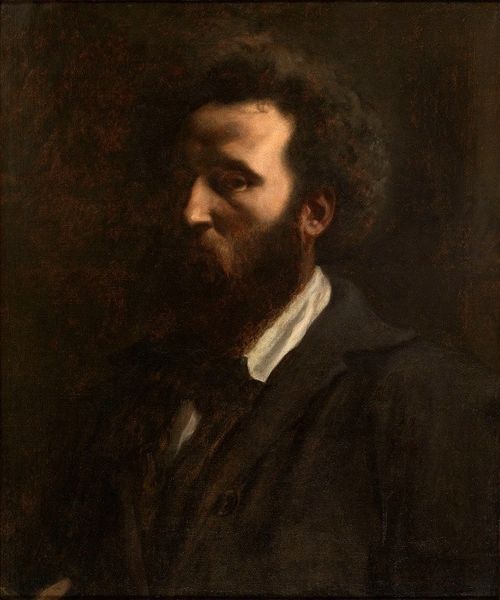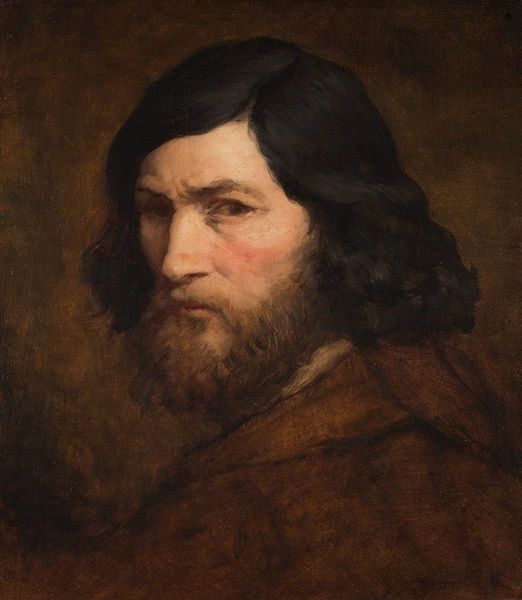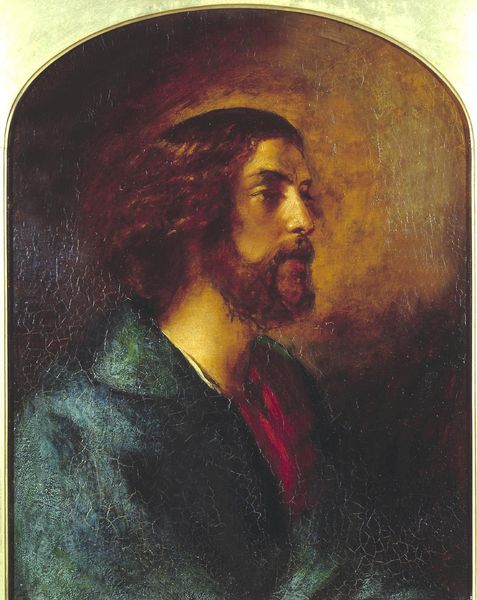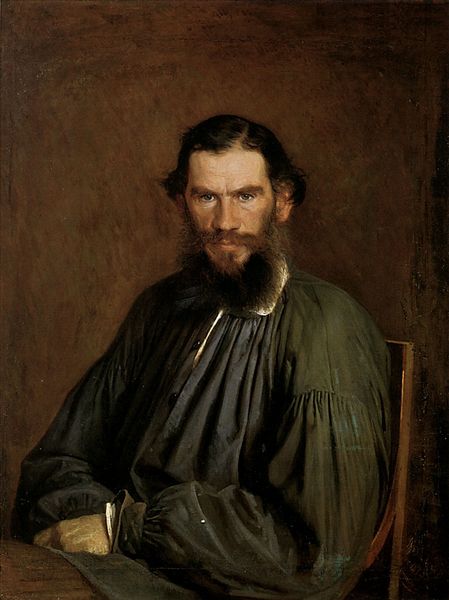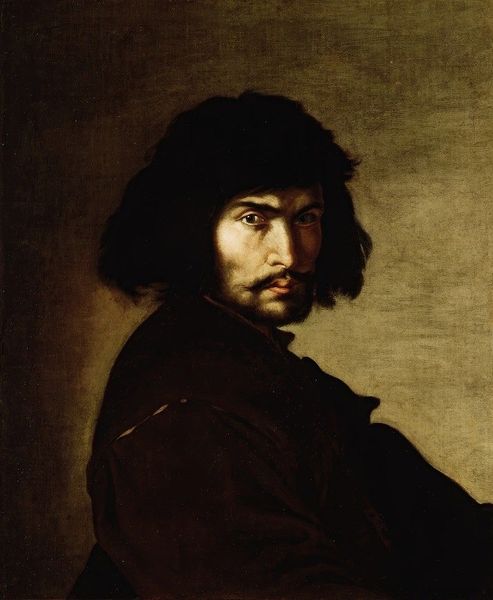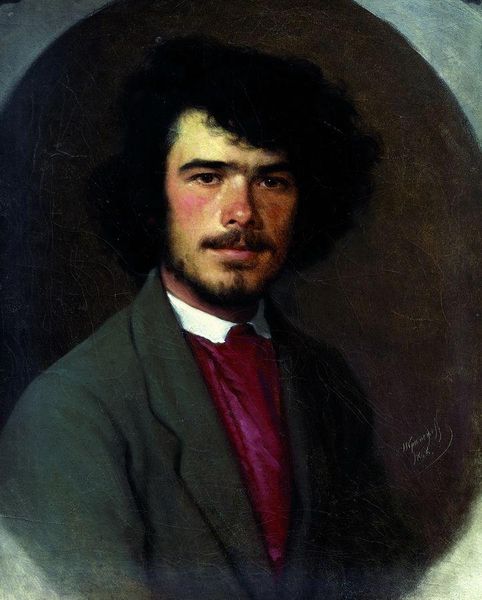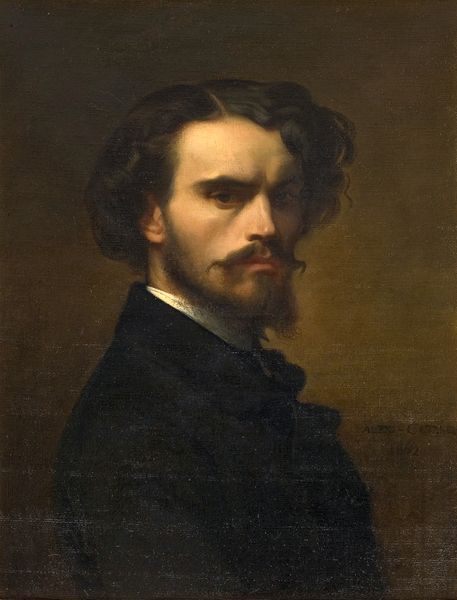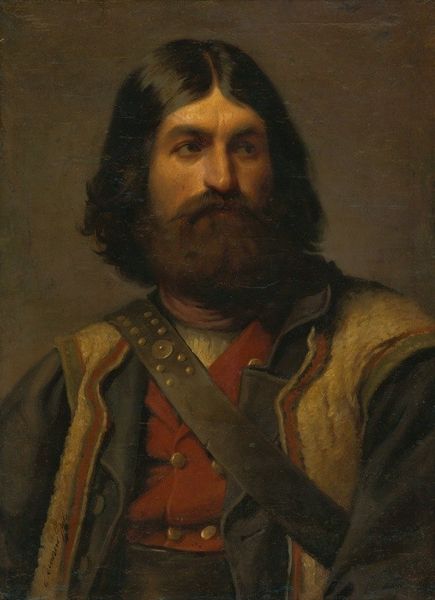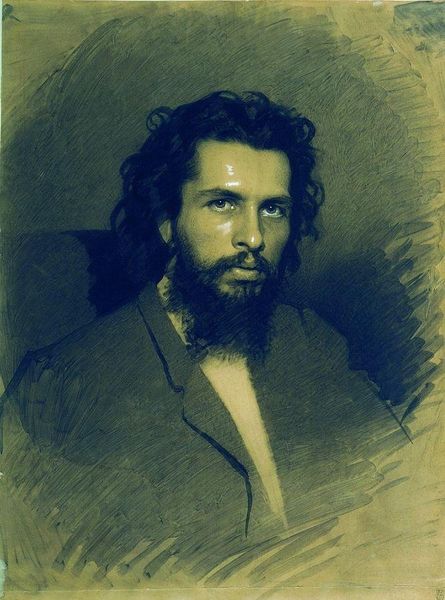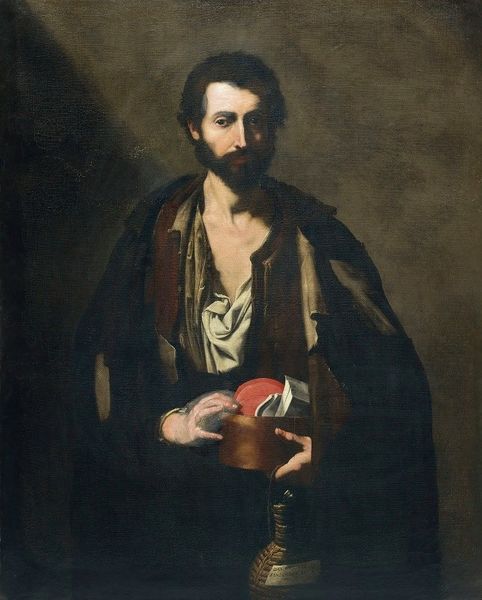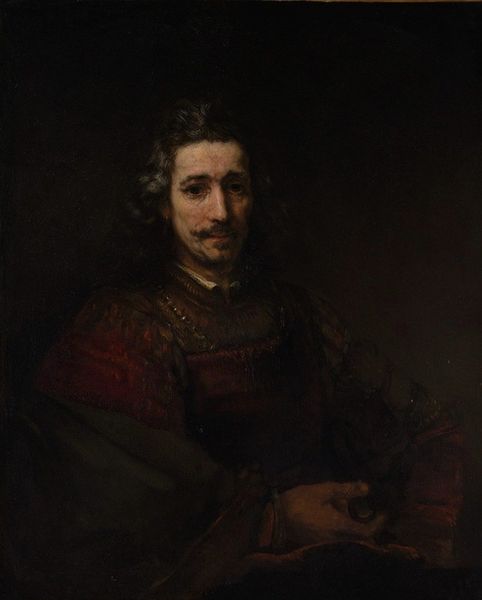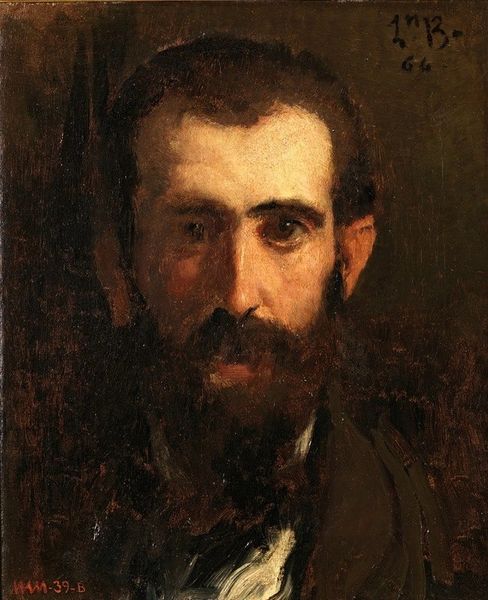
painting, oil-paint
#
portrait
#
figurative
#
portrait
#
painting
#
oil-paint
#
figuration
#
romanticism
#
realism
Copyright: Public Domain: Artvee
Curator: Friedrich von Amerling’s “Portrait of a Roman Peasant,” created in 1838, presents a compelling subject rendered in oil paint. Editor: The eyes! He's looking up and away... lost in thought, perhaps? There's a melancholy air, despite the very deliberate, almost fashionable dress with that splash of crimson. Curator: The portrait presents a nuanced understanding of class representation within Romanticism. Note the treatment of fabric - the textures speak of meticulous observation. Also note that the materiality extends to the very process of production through facture: Observe the very visible brushstrokes on the dark ground. Editor: Visible brushstrokes give it that lovely unfinished quality... as if we've caught him mid-daydream. The contrast between the almost theatrical dark backdrop and that pop of red makes him seem both powerful and vulnerable. I wonder, was this really a peasant or an aristocrat playing dress-up? Curator: That ambiguity gets to the heart of it. Amerling seems invested in the spectacle of labor, perhaps glossing over socio-economic disparities in favour of a romanticized image, or simply staging labor in a new kind of market transaction. His production costs in oil paint, as a medium for higher social classes, redefines what this representation meant to those who might've consumed this in the market place. Editor: Indeed. And it prompts me to question who owns the story—the sitter or the artist? His piercing gaze seems to challenge that notion of ownership, demanding something more than simple observation from us, no? As if he knows we are looking and dissecting him now in 2024, as you dissect the labor of this portrait from the artist in 1838! Curator: Absolutely. We are perpetually complicit, consuming, and contributing to the reproduction of social meanings. And yes, being seen is a kind of labor, a cost often overlooked in these transactions. Editor: It's strangely comforting—that cycle. It makes me want to reach across time and just... thank him for being seen. Thank you for dissecting the context for us to understand all that effort from artist, sitter, and the structures they exist in to produce a viewing today.
Comments
No comments
Be the first to comment and join the conversation on the ultimate creative platform.
